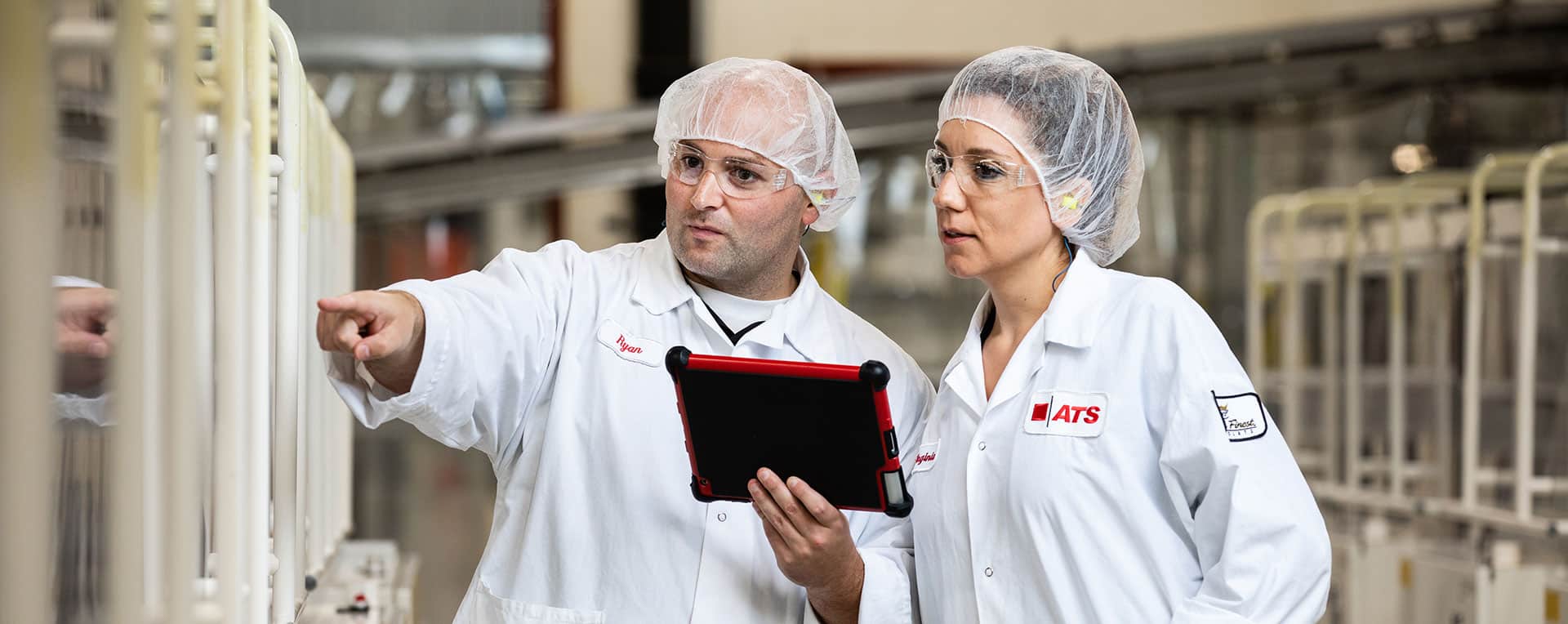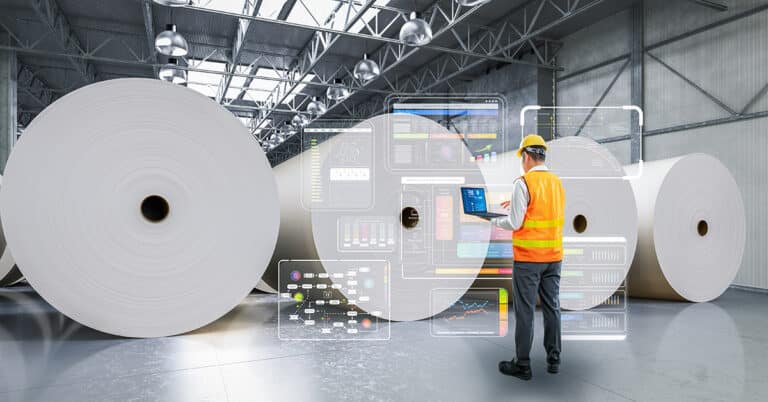No one should ever be injured at work, which is why responsible businesses in industry and elsewhere make safety their top priority. Sometimes, though, perhaps because the type of work done is less predictable, safety doesn’t get the same attention in maintenance.
This blog is about the importance of safety in maintenance operations, because industrial maintenance safety is as important as the safety of everyone else in the factory.
Safety protocols and standards
In the U.S., workplace safety is overseen by the Occupational Safety and Health Administration (OSHA). OSHA is a federal agency tasked with developing and enforcing regulations to protect workers.
OSHA regulations relate to aspects of manufacturing such as guarding, use of personal protective equipment (PPE) and warning signs. There’s also a “General Duty Clause” that requires employers to protect workers from hazards. Those who don’t risk being fined.
Some states have implemented their own workplace safety enforcement organizations. These “state plans” must meet or exceed the OSHA requirements, and OSHA checks to ensure this is the case.
When looking at safety regulations, ANSI standards are often referenced. ANSI is an organization that creates voluntary standards within the U.S. These often provide detailed requirements for equipment such as machine guards and safety glasses. Where appropriate, OSHA will incorporate ANSI standards into its regulations, giving them the force of law.
New safety regulations are developed by OSHA in response to identified problems and needs. The process is rather slow and cumbersome, involving periods of consultation with stakeholders. Eventually, the new regulations come into force, and manufacturers are expected to comply.
OSHA and state agencies can make random checks to ensure regulations are being followed. In general, the onus is on manufacturers to perform safety audits and verify compliance with the various requirements.
Personal protective equipment (PPE)
OSHA requires that workers be provided with PPE to protect them from workplace hazards. This includes loud noise, eye hazards like flying debris, sharp edges and burrs on metal parts, airborne dust and more.
OSHA also requires that workers be trained in the appropriate use and maintenance of the PPE with which they are provided. Records should be kept showing when this training was delivered.
PPE to keep maintenance workers safe includes:
- Eye protection (which must meet ANSI standards for impact resistance)
- Hearing protection
- Safety footwear (to protect against heavy objects, also slip-resistant and possibly electrical insulation)
- Gloves (this is a complicated issue in maintenance safety as gloves can, in some circumstances, create safety hazards)
- Dust masks, ventilators or self-contained breathing apparatuses
Tool and equipment safety
Maintenance technicians use a wider range of tools than production workers. They must still be safe to use and fit for purpose though, and the technicians should be trained in their correct usage.
Issues on which to focus are:
- Maintenance and inspection
- Safe handling and storage practices
- Upgrading to safer equipment
Technicians should be trained to inspect tools before use to verify they are in good condition, and again after use. (This should be part of normal cleaning.) Any tool that gets damaged should be repaired or replaced immediately and not returned. Tools should be stored in a manner that prevents damage or deterioration.
Training in how to use tools is essential and should form part of the training record for each technician. Where problems or potential hazards are identified, always upgrade to equipment that’s safer and easier to use.
Emergency preparedness and response
Anticipating and preparing for emergencies is an integral element of safety and maintenance in industry and is required by OSHA. Examples of emergencies include fire, explosion and toxic chemical spills.
Every business should have an emergency response plan, developed after considering the potential hazards and risks within their operations. A well-considered plan will help minimize the risk of incidents and the chances of any resulting injuries. By preventing incidents and minimizing their impact should something occur, an emergency response plan also forms part of business continuity planning.
Part of the plan should cover employee communication should something happen, what to expect and what their responsibilities are for communication.
Developing a plan is only the start of creating a safe maintenance environment. Employees must be briefed in how the plan relates to them and what they are expected to do in the event of an emergency.
Best practices for maintenance safety
In addition to the points discussed above, some best practices manufacturers should follow regarding the maintenance function relate to:
- Authorization and access
- Regular training
- Establish and follow schedules
- After-use checks
- Involve employees in safety
Lock Out/ Tag Out (LOTO) procedures help ensure equipment is de-energized and safe before a technician begins work, and that power will not be reapplied prematurely. These procedures cover who is allowed to enter hazardous areas and ensures they receive appropriate training. LOTO can be a challenge in some types of breakdown and troubleshooting work where power is needed. In such cases, local safety management should develop appropriate procedures to keep technicians safe.
Training, training, training. This is a recurring theme in any discussion of safety. It starts with ensuring employees understand the risks, which in maintenance work is a broad topic. Then people must be taught how to keep themselves and their colleagues safe, and last, they must know how to recognize safety issues.
One way in which the maintenance function helps keep employees safe is through regular inspections. These should be scheduled, and recorded when they have been done, along with issuing any work orders needed for additional or remedial tasks.
After-use checks are essential for all machinery and equipment, whether used by maintenance or manufacturing. (This also forms part of lean manufacturing.) Any problems or faults should be noted and attended to promptly. The alternative is that nothing is done until the equipment is needed again, at which time either the job cannot be done or someone uses the device in a possibly unsafe manner.
Safety is everyone’s responsibility, and it’s important everyone’s voice is heard. Employees should be encouraged to raise safety concerns without fear of retribution, with action being taken as needed and results communicated back to originator promptly.
Promoting a culture of safety
The goal in maintenance and manufacturing operations is to prevent all accidents. Procedures, PPE and safety devices all play a role, but what’s more important is to build a safety-first culture. This is where every employee takes safety seriously, and feels comfortable that any concerns raised will also be taken seriously.
Steps to help achieve this include:
- Incentives for safe practices: Recognize those who identify, and resolve, potential hazards, reward teams with high scores in safety audits.
- Continuous training and education: Never stop talking about the importance of working in a safe manner.
- Leadership and accountability in safety: Management must demonstrate a genuine commitment to safe working practices.
Utilizing a CMMS for maintenance safety
Use a computerized maintenance management system (CMMS) to schedule regular maintenance and safety inspections and keep records of findings. Use these to drive future preventive maintenance work. Include instructions such as the appropriate LOTO process for the equipment, along with notes on the work orders about hazards for which to check.
Keep safety protocols, manuals and procedures within the CMMS. This provides easy access to safety information for maintenance staff, which can reduce accidents and improve response times to incidents. Records of safety training should also be included in the system.
The CMMS can also be used to log and analyze safety incidents, which provides data to show if workplace safety is improving. Some businesses include near-miss reports to gather more data on potential risks and hazards.
Support for asset maintenance
Well-maintained equipment is less likely to be involved in accidents. ATS helps manufacturers care for their assets with services ranging from storeroom management and short-term maintenance support to preventive and predictive maintenance. Contact us for more information.






